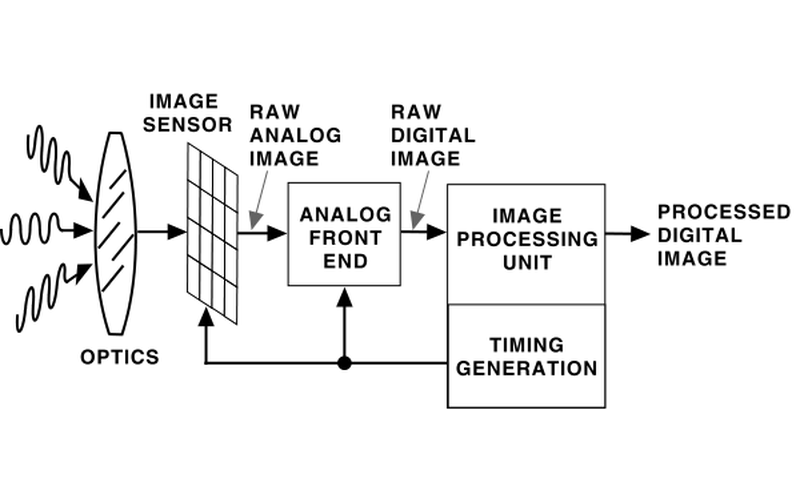Analog design for integrated circuits (ICs) involves creating devices and systems that process continuous signals. Analog plays a crucial role in translating real-world information such as sound, light, and temperature into electrical signals and vice versa. This article discusses the primary differences between analog and digital ICs, reviews key analog applications, and explores common analog design challenges.
The fundamentals of analog and digital ICs
Unlike digital ICs that analyze discrete values, analog ICs process and interpret varying signal levels. Many electronic components — such as operational amplifiers, resistors, capacitors, and transistors — are fundamental to the design and configuration of analog ICs. These circuits are essential in applications that demand high precision and nuanced control, including sensors and power regulation. Key analog design considerations typically involve optimizing signal integrity, reducing thermal noise, and minimizing power draw.
In contrast to analog ICs, digital ICs rely on the principles of Boolean logic, where binary data, represented by discrete 0s and 1s, are processed through logic gates, flip-flops, and sequential circuits. Digital ICs offer several notable advantages over their analog IC counterparts, from scalability and speed to robustness against noise and signal degradation. Although digital ICs are the preferred choice for many computing and data-processing tasks, analog ICs are a prerequisite in systems prioritizing signal variation and subtlety.

Notably, mixed-signal circuit designs — combining digital and analog ICs — facilitate diverse functions such as high-resolution analog-to-digital conversion, analog signal manipulation, and seamless signal filtering and conditioning. Analog sensors in smartphones and cameras, for example, collect raw environmental data rapidly processed and analyzed by advanced digital ICs.
Analog applications and use cases
Analog ICs play a crucial role in many applications and systems, including:
- RF and wireless communications: Essential for radio, television, and cellular, analog ICs help
receive and transmit electromagnetic waves, converting them into electrical signals and vice versa. - Power management circuits: Analog-based power management circuits efficiently regulate voltage and current, ensuring optimal power distribution and safeguarding battery charging and discharging.
- Sensors: Increasingly ubiquitous, sensors equipped with analog ICs interpret physical variables such as temperature, pressure, and light, transforming them into precise analog signals for subsequent digital processing. Advanced driver assistance systems (ADAS), medical equipment, and edge devices all rely on sensors with analog ICs to facilitate accurate data collection and analysis.
- Audio processing: At the heart of audio systems, analog ICs manage sound signal amplification, filtering, and mixing. They are instrumental in maintaining sound quality integrity for microphones, speakers, and music players.
- Medical devices: Medical devices benefit from a combination of analog and digital circuits, working in tandem to ensure high accuracy and reliability. This integrative analog-digital paradigm is particularly important for ECG machines, imaging systems, infusion pumps, patient monitors, and diagnostic analyzers.
Challenges and innovations in analog design
Although analog ICs have existed for decades, system architects must still contend with signal integrity challenges and effectively mitigate distortion caused by electromagnetic interference (EMI) and thermal noise. Engineers rely on advanced shielding techniques and materials, such as conductive coatings, including copper and aluminum, as well as ferrite beads to suppress high-frequency noise.
Multi-layer PCB designs with dedicated ground and power planes also help isolate sensitive components from potential interference. Differential signaling, which involves pairs of wires carrying inverted signals, further minimizes noise, as does boosting signal-to-noise ratio and preventing signal crosstalk with specialized filtering circuits.
Beyond signal integrity challenges, packing ever more transistors into smaller chips and form factors increases power limitations. Fortunately, advanced semiconductor fabrication techniques at lower process nodes facilitate higher component density while boosting signal processing capabilities and power efficiency. Greater silicon density also accommodates complex analog functions in smaller chip areas, which is crucial for smartphones, miniaturized medical implants, and edge sensors running artificial intelligence (AI) applications. Moreover, sophisticated techniques such as photolithography and etching enable the creation of highly detailed and accurate analog components.
 Figure 2. An illustrative overview of MEMS technology applications showcasing components such as tunable lasers, filters, VOAs, optical switches, and their integration into telecommunications systems. (Image: Sercalo Microtechnology via AnalogICTips)
Figure 2. An illustrative overview of MEMS technology applications showcasing components such as tunable lasers, filters, VOAs, optical switches, and their integration into telecommunications systems. (Image: Sercalo Microtechnology via AnalogICTips)
Additionally, micro-electromechanical systems (MEMS) technology facilitates the seamless integration of analog mechanical and electro-mechanical elements — including sensors and actuators — into semiconductor chips. Combining traditional analog circuitry with micro-scale mechanical elements is particularly important for analog applications that require compact form factors and high accuracy, such as wearable devices, medical equipment, and automotive systems.
Summary
Analog ICs convert real-world data into electrical signals and vice versa. Unlike digital ICs that analyze discrete values, analog circuits process and interpret varying signal levels. Notably, mixed-signal circuit designs — which combine digital and analog ICs — facilitate advanced functions for sensors, RF and wireless communications, medical and audio devices, and power management.
References
- What is Analog Design?, Synopsys
- Analogue and Digital Electronic Design, DSL
- Analog Design, Cadence
- What Is Analog IC Design?, All About Circuits





